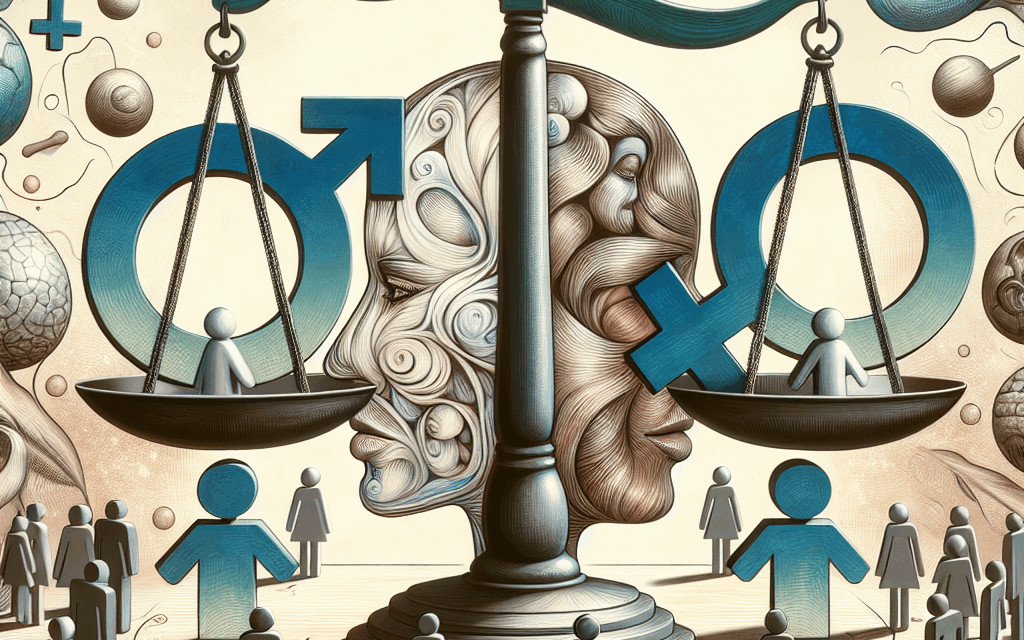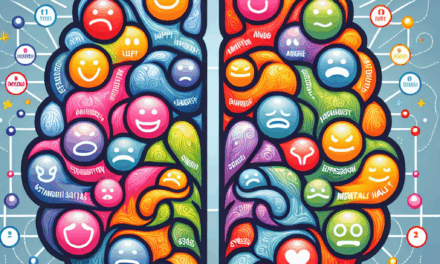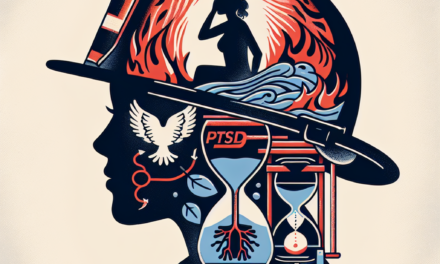Exploring Gender Differences in Mental Health Challenges Prior to Autism Diagnosis
The intersection of gender and mental health is a complex and multifaceted area of study, particularly when it comes to autism spectrum disorder (ASD). Research indicates that there are significant differences in how mental health challenges manifest in individuals prior to receiving an autism diagnosis, with notable variations between genders. This article delves into the nuances of these differences, exploring the mental health challenges faced by individuals, the impact of societal expectations, the role of diagnostic biases, and the implications for treatment and support.
1. Understanding Autism Spectrum Disorder and Gender Disparities
Autism Spectrum Disorder is a neurodevelopmental condition characterized by challenges in social communication and restricted or repetitive behaviors. While the prevalence of autism is often reported to be higher in males than females, the reasons behind this disparity are complex and multifactorial.
Research suggests that the male-to-female ratio for autism is approximately 4:1, but this figure may not accurately reflect the true prevalence among females. Many females with autism may present differently than their male counterparts, often exhibiting subtler symptoms that can lead to underdiagnosis or misdiagnosis. This section will explore the following aspects:
- Prevalence Rates: Understanding the statistics behind autism diagnoses in different genders.
- Symptom Presentation: How autism symptoms differ between males and females.
- Socialization Patterns: The role of social expectations in shaping behavior.
- Diagnostic Criteria: The impact of existing diagnostic frameworks on gender disparities.
- Research Gaps: Areas needing further exploration to understand gender differences in autism.
Prevalence rates of autism indicate a significant gender disparity, with males being diagnosed at a much higher rate than females. However, studies suggest that females may be underdiagnosed due to differences in symptom presentation. For instance, while males may exhibit more overt behaviors such as aggression or hyperactivity, females often display more internalized symptoms, such as anxiety or depression, which can mask their autism. This discrepancy highlights the need for a more nuanced understanding of how autism manifests across genders.
Socialization patterns also play a crucial role in how autism is perceived and diagnosed. Societal expectations often dictate that females should be more socially adept and nurturing, which can lead to females with autism developing compensatory strategies to fit in. These strategies may include mimicking social behaviors or masking their true feelings, making it more challenging for clinicians to recognize their autism. As a result, many females may be misdiagnosed with other mental health conditions, such as anxiety or depression, rather than receiving an autism diagnosis.
The existing diagnostic criteria for autism, primarily developed based on male presentations, may not adequately capture the experiences of females. This has led to calls for a reevaluation of diagnostic frameworks to ensure they are inclusive and representative of all genders. Furthermore, there is a significant gap in research focusing on females with autism, which limits our understanding of their unique challenges and needs.
2. Mental Health Challenges in Males vs. Females Prior to Diagnosis
Before receiving an autism diagnosis, individuals often experience a range of mental health challenges. However, the nature and expression of these challenges can differ significantly between males and females. This section will examine:
- Anxiety Disorders: The prevalence and manifestation of anxiety in males and females.
- Depression: How depression presents differently across genders.
- Behavioral Issues: The role of externalizing vs. internalizing behaviors.
- Co-occurring Conditions: The prevalence of other mental health disorders.
- Impact of Early Experiences: How early life experiences shape mental health outcomes.
Anxiety disorders are among the most common mental health challenges faced by individuals prior to an autism diagnosis. Research indicates that females are more likely to experience anxiety disorders than males, often manifesting as social anxiety or generalized anxiety. In contrast, males may exhibit more externalizing behaviors, such as aggression or defiance, which can complicate their mental health landscape. This difference in expression can lead to varying treatment approaches and outcomes.
Depression is another significant mental health challenge that can present differently in males and females. Females may experience more internalized symptoms, such as feelings of worthlessness or hopelessness, while males may display more externalized symptoms, such as irritability or anger. This divergence can lead to misdiagnosis, as clinicians may overlook the signs of depression in males who do not fit the traditional mold of a depressed individual.
Behavioral issues also differ between genders, with males often exhibiting more overt behavioral problems, while females may internalize their struggles. This internalization can lead to a higher prevalence of co-occurring conditions, such as eating disorders or self-harm, in females. Understanding these differences is crucial for developing effective treatment plans that address the unique needs of each gender.
Early life experiences, including trauma or adverse childhood experiences, can significantly impact mental health outcomes. Research shows that females may be more susceptible to the effects of early trauma, leading to higher rates of anxiety and depression. In contrast, males may respond to early experiences with more externalizing behaviors, complicating their mental health challenges. Recognizing these patterns can help clinicians provide more tailored support to individuals prior to an autism diagnosis.
3. The Role of Societal Expectations and Gender Norms
Societal expectations and gender norms play a significant role in shaping mental health challenges experienced by individuals prior to an autism diagnosis. This section will explore:
- Gender Stereotypes: How societal beliefs about gender influence mental health.
- Socialization Processes: The impact of upbringing on mental health outcomes.
- Stigma and Discrimination: The effects of societal stigma on seeking help.
- Support Systems: How gender influences access to support.
- Media Representation: The role of media in shaping perceptions of gender and mental health.
Gender stereotypes can significantly influence how individuals perceive their mental health challenges. For instance, societal beliefs that associate masculinity with strength and stoicism may discourage males from expressing vulnerability or seeking help for mental health issues. Conversely, females may be socialized to prioritize relationships and emotional expression, which can lead to heightened awareness of their mental health struggles but also increased pressure to conform to societal expectations.
The socialization processes that individuals undergo from a young age can also impact their mental health outcomes. Boys may be encouraged to engage in competitive and aggressive behaviors, while girls may be taught to be nurturing and empathetic. These differing expectations can lead to divergent coping mechanisms, with males often resorting to externalizing behaviors and females internalizing their struggles.
Stigma and discrimination surrounding mental health can further complicate the experiences of individuals prior to an autism diagnosis. Males may face societal pressure to “tough it out” and avoid seeking help, while females may be dismissed or not taken seriously when they express their mental health challenges. This stigma can prevent individuals from accessing the support they need, exacerbating their mental health issues.
Access to support systems can also be influenced by gender. Females may have more robust social networks and support systems, which can provide a buffer against mental health challenges. In contrast, males may struggle to find supportive environments that encourage emotional expression. Understanding these dynamics is essential for developing effective interventions that address the unique needs of each gender.
Media representation plays a crucial role in shaping societal perceptions of gender and mental health. Often, media portrayals reinforce stereotypes that can perpetuate stigma and misunderstanding. For example, the depiction of males as emotionally stoic and females as overly emotional can influence how individuals perceive their own mental health challenges and the help-seeking behaviors they engage in.
4. Diagnostic Biases and Their Impact on Mental Health
Diagnostic biases can significantly impact the mental health challenges faced by individuals prior to an autism diagnosis. This section will examine:
- Gender Bias in Diagnosis: How biases affect the identification of autism.
- Misdiagnosis: The prevalence of misdiagnosis among different genders.
- Impact of Stereotypes: How societal stereotypes influence diagnostic practices.
- Clinical Training: The role of clinician training in addressing biases.
- Recommendations for Improvement: Strategies to reduce diagnostic biases.
Gender bias in diagnosis can lead to significant disparities in the identification of autism. Clinicians may unconsciously hold biases that influence their assessment and diagnostic practices, often leading to underdiagnosis in females. For example, a clinician may be more likely to recognize overt behavioral issues in males while overlooking the subtler signs of autism in females, resulting in a missed diagnosis.
Misdiagnosis is a common issue that can arise from these biases. Females with autism may be misdiagnosed with anxiety or depression due to their internalized symptoms, while males may be misdiagnosed with behavioral disorders. This misdiagnosis can lead to inappropriate treatment plans that do not address the underlying issues, further complicating their mental health challenges.
The impact of societal stereotypes on diagnostic practices cannot be understated. Clinicians may unconsciously apply gendered expectations to their assessments, leading to skewed results. For instance, a clinician may expect males to exhibit more aggressive behaviors, leading them to overlook the signs of autism in females who may present with anxiety or social withdrawal.
Clinical training plays a crucial role in addressing these biases. Ensuring that clinicians are aware of gender differences in autism presentation and mental health challenges is essential for improving diagnostic accuracy. Training programs should emphasize the importance of recognizing and addressing biases to provide equitable care for all individuals.
To reduce diagnostic biases, several strategies can be implemented. These include increasing awareness of gender differences in autism presentation, incorporating diverse case studies into training programs, and promoting interdisciplinary collaboration among healthcare professionals. By addressing these biases, we can improve diagnostic accuracy and ensure that individuals receive the appropriate support for their mental health challenges.
5. Implications for Treatment and Support
The differences in mental health challenges experienced by individuals prior to an autism diagnosis have significant implications for treatment and support. This section will explore:
- Tailored Interventions: The need for gender-specific treatment approaches.
- Support Networks: The importance of building supportive environments.
- Education and Awareness: Raising awareness among clinicians and the public.
- Policy Implications: The role of policy in addressing gender disparities.
- Future Research Directions: Areas for further exploration in gender and autism.
Tailored interventions are essential for addressing the unique mental health challenges faced by individuals prior to an autism diagnosis. Gender-specific treatment approaches can help ensure that individuals receive the support they need. For example, females may benefit from therapies that focus on social skills and emotional regulation, while males may require interventions that address behavioral issues and impulsivity.
Building supportive environments is crucial for promoting mental health and well-being. Support networks, including family, friends, and community resources, can provide individuals with the encouragement and understanding they need to navigate their challenges. Creating safe spaces for open dialogue about mental health can help reduce stigma and promote help-seeking behaviors.
Education and awareness are vital for improving understanding of gender differences in autism and mental health challenges. Raising awareness among clinicians, educators, and the public can help reduce biases and improve diagnostic accuracy. Training programs should emphasize the importance of recognizing gender differences in symptom presentation and the need for equitable care.
Policy implications also play a significant role in addressing gender disparities in autism diagnosis and treatment. Advocating for policies that promote equitable access to mental health services and support can help ensure that all individuals receive the care they need. This includes funding for research on gender differences in autism and mental health, as well as initiatives aimed at reducing stigma and promoting awareness.
Future research directions should focus on exploring the unique experiences of females with autism, as well as the impact of societal expectations on mental health outcomes. Longitudinal studies examining the long-term effects of early diagnosis and intervention can provide valuable insights into the best practices for supporting individuals across genders.
Conclusion
Exploring gender differences in mental health challenges prior to an autism diagnosis reveals a complex interplay of biological, social, and cultural factors. Understanding these differences is crucial for improving diagnostic accuracy, treatment approaches, and support systems for individuals on the autism spectrum. By recognizing the unique challenges faced by males and females, we can work towards creating a more equitable and inclusive environment for all individuals with autism.
Key takeaways from this exploration include:
- The prevalence of autism is higher in males, but females may be underdiagnosed due to differences in symptom presentation.
- Mental health challenges, such as anxiety and depression, manifest differently across genders, necessitating tailored interventions.
- Societal expectations and gender norms significantly influence mental health outcomes and help-seeking behaviors.
- Diagnostic biases can lead to misdiagnosis and inappropriate treatment, highlighting the need for increased awareness among clinicians.
- Building supportive environments and advocating for policy changes are essential for addressing gender disparities in autism diagnosis and treatment.
As we continue to explore the intersection of gender and mental health in the context of autism, it is imperative that we prioritize research, education, and advocacy efforts to ensure that all individuals receive the support they need to thrive.





